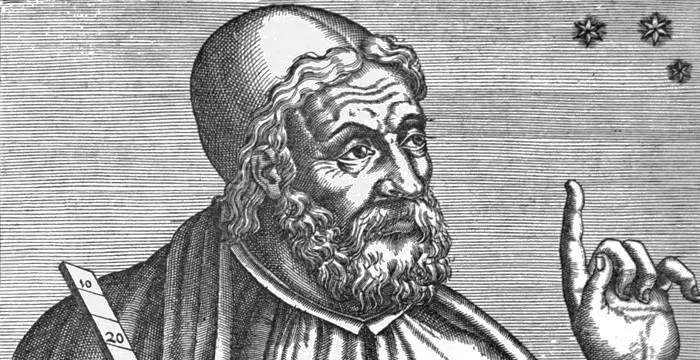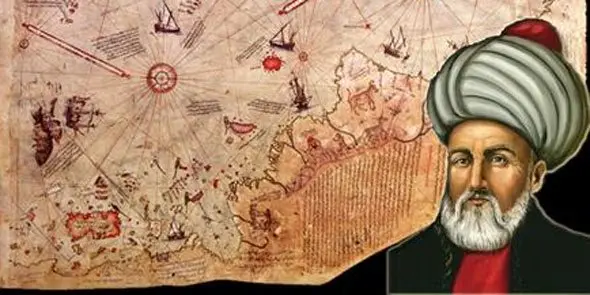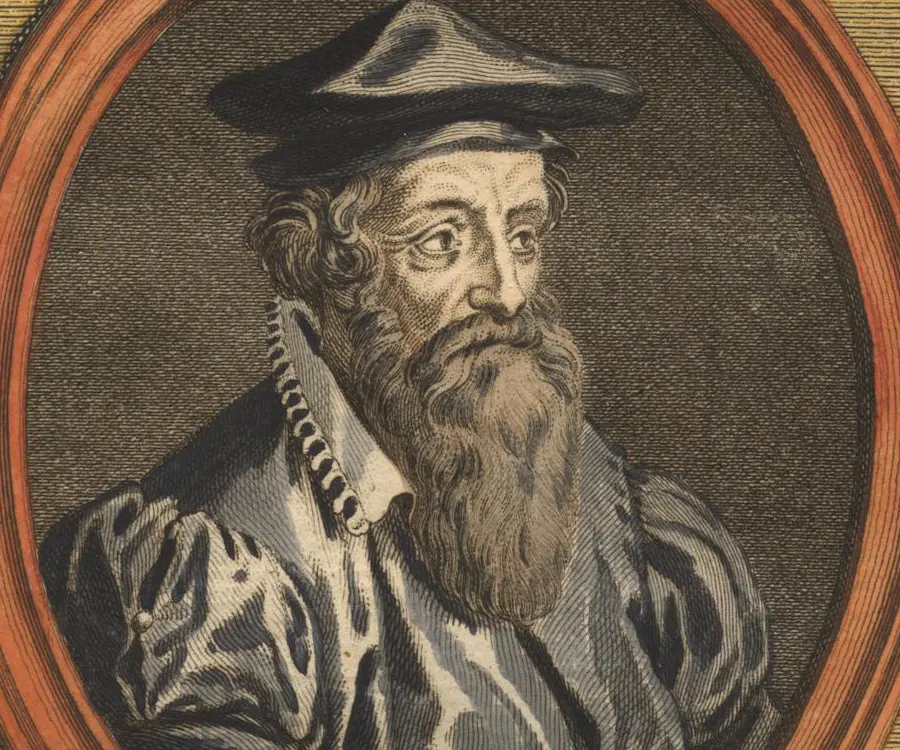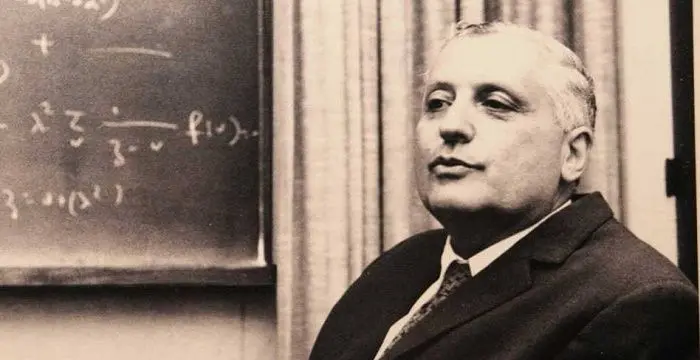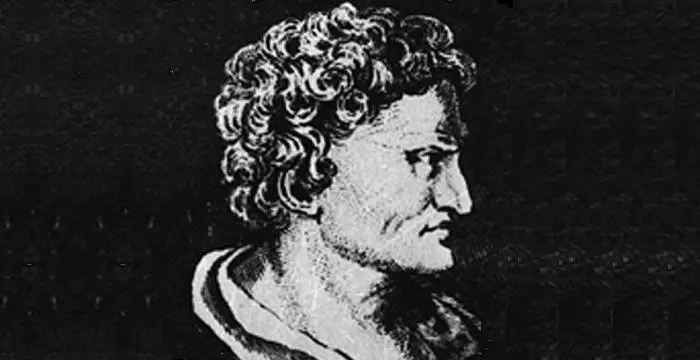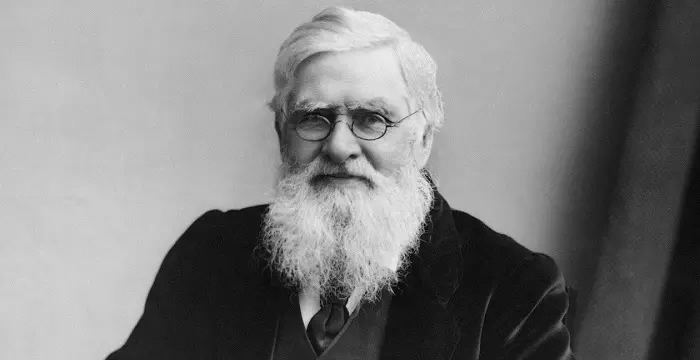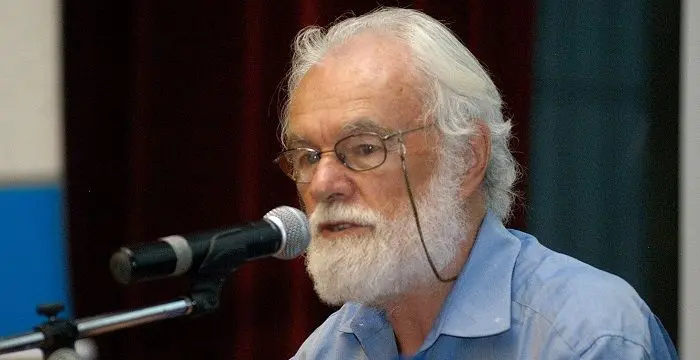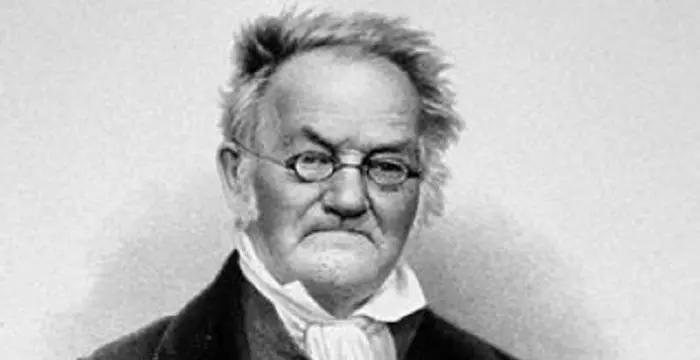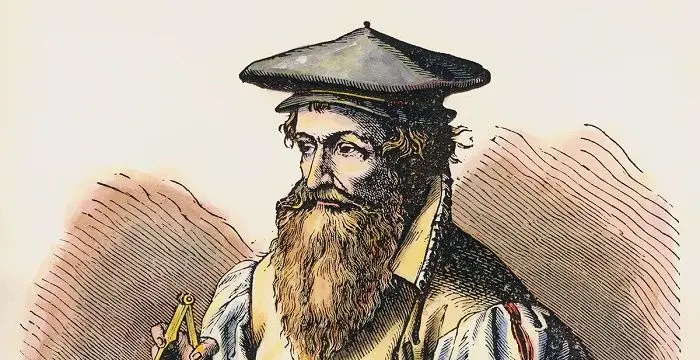
Gerardus Mercator - Cartographer, Life Achievements and Personal Life
Gerardus Mercator's Personal Details
Gerardus Mercator was a famous Flemish cartographer during the Renaissance period
| Information | Detail |
|---|---|
| Birthday | March 5, 1512 |
| Died on | December 2, 1594 |
| Nationality | Belgian |
| Famous | Intellectuals & Academics, Geographers, Belgian Men, Cartographer |
| Spouses | Barbara Sckellen, Gertrude Vierlings |
| Known as | Gerardus Mercator de Rupelmonde |
| Birth Place | Rupelmonde, County of Flanders (in modern-day Belgium) |
| Gender | Male |
| Father | Hubert Kremer |
| Mother | Emerentia |
| Sun Sign | Pisces |
| Born in | Rupelmonde, County of Flanders (in modern-day Belgium) |
| Famous as | Cartographer |
| Died at Age | 82 |
// Famous Cartographer
Muhammad al-Idrisi
Muhammad al-Idrisi was a Muslim cartographer, geographer, traveler and Egyptologist. This biography provides detailed information about his childhood, life, work, achievements and timeline.
Claudius Ptolemy
Ptolemy was a prominent Greek astronomer and geographer. Read through the article to know more about Ptolemy’s profile, childhood and life.
Piri Reis
Ahmed Muhiddin Piri, better known as Piri Reis, was an Ottoman admiral, geographer, and cartographer. This biography profiles his childhood, life, career, campaigns, work, and gives some fun facts.
Gerardus Mercator's photo
Who is Gerardus Mercator?
Gerardus Mercator was a famous Flemish cartographer during the Renaissance period who first coined the term ‘atlas’ for the maps he created. He collected reports from travelers to distant parts of the world and pieced together the information to create the maps. As he was a good cartographer he was able to depict the correct topography of area for which he created the map. The maps were very accurate at the center but were often distorted at the edges. This was probably due to the fact that he used the longitudes and latitudes as straight lines running parallel to each other from the top to the bottom and from side to side. He was the first person to use the term ‘North America’ in his maps and showed the ‘New World’ on his maps as stretching from the North to the Southern hemispheres. His maps became the sole guide for people venturing into the unknown over the land and the sea. He lived during the time of ‘reformations’ in Europe and was suspected to be a Lutheran and imprisoned for seven months. He started making maps when the world was opening up to the Europeans voyagers and travelers rapidly.
// Famous Belgian Men
Stromae
Stromae is a Belgian musician, rapper, singer and songwriter. Check out this biography to know about his birthday, childhood, family life, achievements, and fun facts about him.
Kevin De Bruyne
Kevin De Bruyne is a Belgian footballer who plays for the English Premier League team ‘Manchester City’ as well as the Belgian national team.
Ilya Prigogine
Ilya Prigogine was a Russian-born Belgian physical chemist who was awarded the Nobel Prize for Chemistry in 1977. This biography of Ilya Prigogine provides detailed information about his childhood, life, achievements, works & timeline.
Childhood & Early Life
Gerardus Mercator was born on March 5, 1512, in a St. Johann hospice in Rupelmonde, Glanders, in the Burgundian Netherlands, now in Belgium.
His father was a cobbler named Hubert Kremer and his mother was Emerentia. He was the seventh child of his parents.
His parents returned to Gangelt after Gerardus was born but had to come back to Rupelmonde in 1518 due to plagues, famines and lawlessness.
Gerardus joined a public school in Rupelmonde and studied arithmetic, Christian theology and Latin.
His uncle Gisbert, who became his guardian after his father died in 1526, sent Gerardus to study in Netherlands in 1527 at the ‘s-Hertogenbosch’ monastic school run by the ‘Brethren of the Common Life’.
While he was there he changed his name from ‘Kremer’ to ‘Mercator’ which meant merchant in Latin. He took on the full name of Gerardus Mercator de Rupelmonde around this time.
He matriculated from the ‘University of Louvain’ on August 29, 1530 with philosophy and humanities.
He studied for a two-year degree course at this university on Arts subjects that were based entirely on the teachings of Aristotle.
In 1852 he graduated with a master’s degree but did not study further as he felt an urge to challenge the views of Aristotle and the Catholic Church about Earth’s creation.
He left the university because he did not want to become a philosopher unable to reconcile the teachings of Aristotle to the teachings of the Bible about the origin of the Earth.
During this period he travelled to Antwerp and Mechelen and became highly interested in geography which could explain the structure of the Earth.
He returned to the Louvain in 1534 to study mathematics under Gemma Frisius but found it difficult to continue as he had no mathematical background.
On Gemma Frisius’ suggestion he started to study mathematics which related to cosmography and soon began enjoying mathematics and started applying it to astronomy and geography.
He learnt engraving and instrument making from Gaspar Van der Heyden during this period.
Career
Gerardus Mercator started teaching mathematics to students at Louvain while he was still learning the subject. He also started making high quality mathematical instruments and sold them to others with the permission of the university to earn some money.
He constructed the first terrestrial globe in 1535 with the help of Gemma Frisius and Van der Heyden. For the first time copper blocks were used instead of wooden blocks to print the paper for the globe. Gemma Frisius looked after the geographical details while Van de Heyden did the engraving.
In 1537 Gerardus made a globe of the stars again with the help of Gemma Frisius and Van der Heyden. This time Gerardus played a bigger role in its creation.
Gerard Mercator created his first world map in 1538.
He made a map of Flanders in 1540 for political purposes with the help of a survey and the triangulation process suggested by Gemma Frisius.
He produced a map of Europe in the summer of 1540 which had a lot of inconsistencies due to the wrong information given by sailors.
He corrected the problems with the ‘loxodrome’ also known as the ‘rhumb line’ or ‘sperical helix line’ and created a new globe in 1541.
In February 1544 he was suspected as a Lutheran because of his Protestant beliefs and imprisoned for seven months in the Rupelmonde castle. He was released in September 1544 with the help of the ‘Louvain University’.
He completed the celestial globe in 1551 in line with his earlier terrestrial globe. He corrected the positions of the stars with the help of Copernicus’ model of the universe.
He moved to Duisburg in 1552 and opened a cartographic workshop in anticipation of the requirement for maps.
He brought out a 1.6 meters long and 1.3 meters wide map of Europe in 1554.
Mercator taught mathematics from 1559 to 1562 to students wanting to enter the proposed university at Duisburg but gave it up when the plan for the university was scrapped in 1562.
He created the maps of Lorraine and the British Isles in 1564 of which the latter was used for political purposes against Protestant Queen Elizabeth.
He was appointed as the ‘Court Cosmographer’ to Duke Wilhelm of Cleve in 1564.
In 1569 he created the famous ‘Mercator projection’ which was a world map on 18 separate sheets and named it ‘atlas’. The maps had parallel lines running from top to bottom and from side to side representing the longitudes and the latitudes. This caused the map to be fairly accurate at the center but produced distorted shapes of land masses at the sides.
In 1578 he published the corrected and updated maps created by Ptolemy.
In 1585 he tried to include Germany, France and the Netherlands in his map but could not complete his project. His maps in 1589 included the Balkans or Sclavonia and Greece.
After having a stroke in 1590 he was unable to complete any of his projects. By 1592 he had lost his sight and after the second stroke in 1593 he was totally paralyzed. His incomplete works were published by his son in 1595.
Personal Life & Legacy
Gerardus Mercator married Barbara Sckellen in 1536. They had three sons, Arnold, Bartholemew and Rumold, and three daughters, Dorothes, Catharina and Emerentia from the marriage.
Thereafter he married Gertrude Vierlings, the wealthy widow of the mayor of Duisburg in 1589.
He died of a third stroke and cerebral hemorrhage on December 2, 1594, in Duisburg, the duchy of Cleves which is now located in Germany.
Statues of Gerardus Mercator can be found in several cities across the world and there are many buildings, universities, streets, ships and even an asteroid named after him.
// Famous Intellectuals & Academics
Bertil Gotthard Ohlin
Bertil Gotthard Ohlin was a famous Swedish economist. This biography profiles his childhood, family life & achievements.
Emily Greene Balch
Emily Greene Balch was an American economist, sociologist and pacifist who won the 1946 Nobel Peace Prize. This biography of Emily Greene Balch provides detailed information about her childhood, life, achievements, works & timeline.
Martin Buber
One of the greatest philosophers to have ever walked on earth, Martin Buber contributions to philosophy is a long-standing one. Explore all about his profile, childhood, life and timeline here.
Gerardus Mercator biography timelines
- // 5th Mar 1512Gerardus Mercator was born on March 5, 1512, in a St. Johann hospice in Rupelmonde, Glanders, in the Burgundian Netherlands, now in Belgium.
- // 1518His parents returned to Gangelt after Gerardus was born but had to come back to Rupelmonde in 1518 due to plagues, famines and lawlessness.
- // 1526 To 1527His uncle Gisbert, who became his guardian after his father died in 1526, sent Gerardus to study in Netherlands in 1527 at the ‘s-Hertogenbosch’ monastic school run by the ‘Brethren of the Common Life’.
- // 29th Aug 1530He matriculated from the ‘University of Louvain’ on August 29, 1530 with philosophy and humanities.
- // 1534He returned to the Louvain in 1534 to study mathematics under Gemma Frisius but found it difficult to continue as he had no mathematical background.
- // 1535He constructed the first terrestrial globe in 1535 with the help of Gemma Frisius and Van der Heyden. For the first time copper blocks were used instead of wooden blocks to print the paper for the globe. Gemma Frisius looked after the geographical details while Van de Heyden did the engraving.
- // 1536Gerardus Mercator married Barbara Sckellen in 1536. They had three sons, Arnold, Bartholemew and Rumold, and three daughters, Dorothes, Catharina and Emerentia from the marriage.
- // 1537In 1537 Gerardus made a globe of the stars again with the help of Gemma Frisius and Van der Heyden. This time Gerardus played a bigger role in its creation.
- // 1538Gerard Mercator created his first world map in 1538.
- // 1540He made a map of Flanders in 1540 for political purposes with the help of a survey and the triangulation process suggested by Gemma Frisius.
- // 1540He produced a map of Europe in the summer of 1540 which had a lot of inconsistencies due to the wrong information given by sailors.
- // 1541He corrected the problems with the ‘loxodrome’ also known as the ‘rhumb line’ or ‘sperical helix line’ and created a new globe in 1541.
- // Sep 1544In February 1544 he was suspected as a Lutheran because of his Protestant beliefs and imprisoned for seven months in the Rupelmonde castle. He was released in September 1544 with the help of the ‘Louvain University’.
- // 1551He completed the celestial globe in 1551 in line with his earlier terrestrial globe. He corrected the positions of the stars with the help of Copernicus’ model of the universe.
- // 1552He moved to Duisburg in 1552 and opened a cartographic workshop in anticipation of the requirement for maps.
- // 1554He brought out a 1.6 meters long and 1.3 meters wide map of Europe in 1554.
- // 1564He created the maps of Lorraine and the British Isles in 1564 of which the latter was used for political purposes against Protestant Queen Elizabeth.
- // 1564He was appointed as the ‘Court Cosmographer’ to Duke Wilhelm of Cleve in 1564.
- // 1569In 1569 he created the famous ‘Mercator projection’ which was a world map on 18 separate sheets and named it ‘atlas’. The maps had parallel lines running from top to bottom and from side to side representing the longitudes and the latitudes. This caused the map to be fairly accurate at the center but produced distorted shapes of land masses at the sides.
- // 1578In 1578 he published the corrected and updated maps created by Ptolemy.
- // 1585 To 1589In 1585 he tried to include Germany, France and the Netherlands in his map but could not complete his project. His maps in 1589 included the Balkans or Sclavonia and Greece.
- // 1589Thereafter he married Gertrude Vierlings, the wealthy widow of the mayor of Duisburg in 1589.
- // 2nd Dec 1594He died of a third stroke and cerebral hemorrhage on December 2, 1594, in Duisburg, the duchy of Cleves which is now located in Germany.
- // 1952In 1852 he graduated with a master’s degree but did not study further as he felt an urge to challenge the views of Aristotle and the Catholic Church about Earth’s creation.
// Famous Geographers
Jabir Ibn Hayyan
Jabir Ibn Hayyan was a medieval era polymath. Check out this biography to know about his life, works and achievements.
Hipparchus
Hipparchus was a Greek astronomer and mathematician. This biography profiles his childhood, life, achievements and timeline.
Alfred Russel Wallace
Alfred Russel Wallace was a British scientist and explorer, best known for discovering the concept of evolution by natural selection. This biography of Alfred Wallace provides information about his childhood, life, achievements, works & timeline.
David Harvey
David W. Harvey is a British Distinguished Professor of Anthropology and Geography at The Graduate Center of City University of New York (CUNY). This biography profiles his childhood, life, academic career, achievements and timeline.
Nikolay Przhevalsky
Nikolay Przhevalsky was a Russian explorer who contributed significantly to European knowledge of Central Asia. This biography of Nikolay Przhevalsky provides detailed information about his childhood, life, achievements, works & timeline.
Carl Ritter
Carl Ritter was a famous German geographer, who, along with Alexander von Humboldt, founded the modern geographical science. Check out this biography to know about his childhood, life, achievements, works & timeline.
Gerardus Mercator's FAQ
What is Gerardus Mercator birthday?
Gerardus Mercator was born at 1512-03-05
When was Gerardus Mercator died?
Gerardus Mercator was died at 1594-12-02
Where was Gerardus Mercator died?
Gerardus Mercator was died in Duisburg, United Duchies of Jülich-Cleves-Berg (modern-day Germany)
Which age was Gerardus Mercator died?
Gerardus Mercator was died at age 82
Where is Gerardus Mercator's birth place?
Gerardus Mercator was born in Rupelmonde, County of Flanders (in modern-day Belgium)
What is Gerardus Mercator nationalities?
Gerardus Mercator's nationalities is Belgian
Who is Gerardus Mercator spouses?
Gerardus Mercator's spouses is Barbara Sckellen, Gertrude Vierlings
Who is Gerardus Mercator's father?
Gerardus Mercator's father is Hubert Kremer
Who is Gerardus Mercator's mother?
Gerardus Mercator's mother is Emerentia
What is Gerardus Mercator's sun sign?
Gerardus Mercator is Pisces
How famous is Gerardus Mercator?
Gerardus Mercator is famouse as Cartographer

